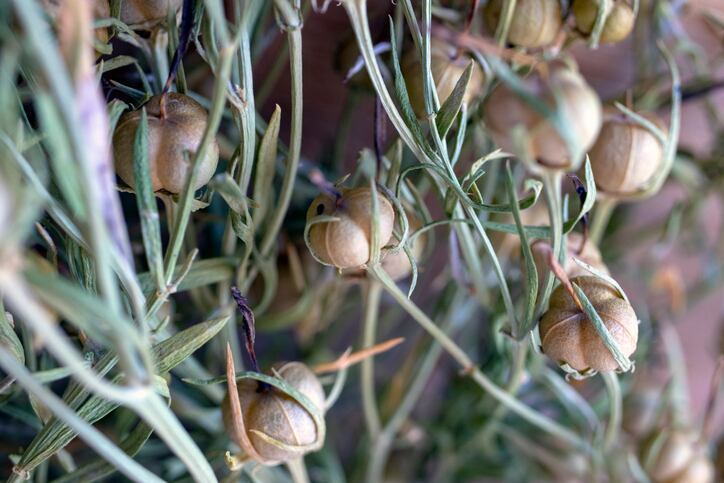The study aimed to explore the feasibility, compliance, and potential benefits of NRE intervention in both healthy (BMI ≤ 24.9 Kg/m2) and overweight/obese adults (BMI > 25 Kg/m2).
The authors from Tunisia and Japan concluded that NRE infusion at a dosage of 2000 mg was effective in reducing serum lipid levels in human volunteers within a brief 10-day period.
The authors state: “This pilot study represents the first investigation into the feasibility, acceptability, and potential benefits of NRE intervention on lipid profiles in human volunteers.”
Significance
The condition known as dyslipidemia involves abnormal levels of different types of cholesterol and triglycerides in the blood.
Obesity often leads to dyslipidemia due to factors free fatty acid release from adipose tissue to the liver. The enhanced free fatty acid release has been proposed to lead to increased triglycerides (TG) and very-low-density lipoprotein (VLDL) production and can inhibit lipolysis, thereby promoting hypertriglyceridemia.
Moreover, lipolysis of triglycerides and low-density lipoprotein (LDL) receptor expression is impaired in obesity, which affect high-density lipoprotein cholesterol (HDL) metabolism, leading to lower levels of HDL-C with impairment of reversed cholesterol transport.
This correlation between BMI and dyslipidemia has been proposed as a risk factor for cardiovascular diseases among obese individuals.
Medications are commonly used to manage dyslipidemia, but they can have side effects such as liver injury, flushing, headaches, and elevated LDL levels.
The authors of the new study state that, as an alternative, “the search for safer alternatives for the prevention and treatment of dyslipidemia is warranted.”
Several medicinal plants used in traditional medicine have been suggested as potential means to prevent dyslipidemia without significant side effects.
Nitraria retusa, a drought-resistant shrub belonging to the Nitrariaceae family and found in Asian and North African regions, has been traditionally used for hypertension and inflammation.
One previous study conducted on 3T3-L1 cells revealed that Nitraria retusa extract (NRE) inhibits differentiation, reduces cell size and number, and decreases fat accumulation and lipid droplet content.
Previous research also demonstrated that Nitraria retusa regulates the expression of genes involved in lipolysis and lipogenesis, promoting lipid metabolism in the liver of obese mice.
However, human clinical studies on Nitraria retusa are lacking. The authors of the new study proposed to investigate the feasibility, acceptance, and initial effects of Nitraria retusa extract on lipid profiles in both healthy individuals and those who are overweight or obese.
The study
A total of 98 participants, including 37 healthy individuals and 61 overweight/obese adults, were randomly assigned to either a low-dose (500 mg/day) or a high-dose (2000 mg/day) NRE intervention group.
Plasma lipid biomarkers, liver and kidney functions, general haematology, and blood glucose levels were measured at the baseline and 10 days after intervention.
While the lipid profile of the healthy participants did not show any statistically significant changes, the obese participants in the high-dose group experienced a significant decrease in triglyceride levels (within-group difference p value = 0.004) and an increase in HDL levels (within-group p value < 0.001)
Additionally, results showed that the infusion was well tolerated by overweight and obese participants.
The authors note: “Findings suggest that NRE may offer a safer alternative option compared to synthetic drugs, as it lacks significant adverse effects.”
Mechanism of action
The authors suggest that the observed decrease in TG levels may be attributed to multiple mechanisms.
The authors hypothesise: “NRE may potentially inhibit the absorption of TG into the body while promoting its degradation and elimination through feces. Additionally, NRE may stimulate the transfer of TG to HDL.”
Previous studies have highlighted the cardioprotective properties of HDL, including its ability to safeguard LDL from oxidative modification, and it has been documented that HDL is thought to exchange lipid peroxidation products between lipoproteins.
One previous study proposed that HDL inhibits the accumulation of lipid peroxides on LDL, thus protecting against atherosclerosis.
HDL plays a crucial role in preventing the buildup of cholesterol, TGs, and LDL in the arteries by facilitating the transportation of cholesterol to the liver for elimination from the body.
This process, known as reverse cholesterol transport, reportedly reduces the risks of conditions such as stroke and coronary artery diseases.
Limitations
The authors do note there were some limitations in size and length of the study.
They state: “A more extensive and prolonged study, encompassing a larger number of participants from both genders within the same age range, is nevertheless warranted in order to achieve a more precise evaluation of the benefits conferred by NRE.
"Investigations of the beneficial effects of Nitraria retusa on human lipidic status would also be strengthened by including a placebo group and a group with dyslipidemia.”
Journal: Nutrients
https://www.mdpi.com/2072-6643/15/16/3649\
Exploring the Effects of Short-Term Daily Intake of Nitraria retusa Tea on Lipid Profile: A Pre-Post, Uncontrolled Pilot Study in Both Healthy and Overweight/Obese Adults
Authors: Aicha Laouani, Hana Nasrallah, Awatef Sassi, Farhana Ferdousi, Feten Zar Kalai, Yosra Hasni, Khalifa Limem, Hiroko Isoda and Saad Saguem.


